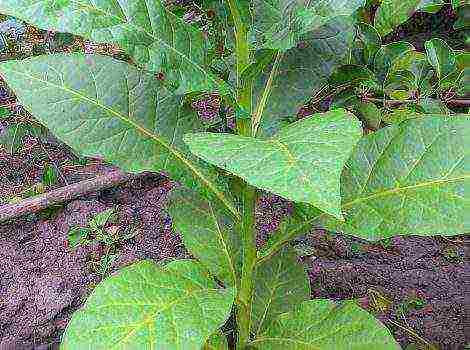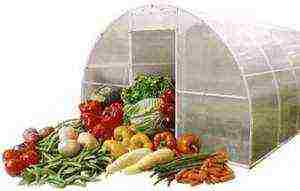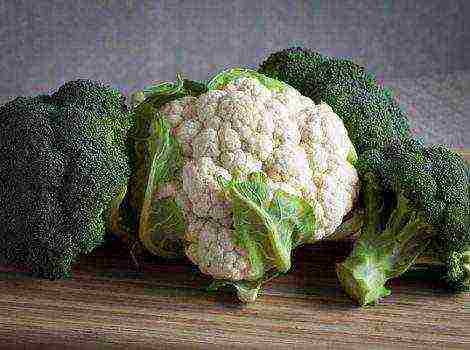The pensioner Starosovetsky who lives in the village knows how to grow potatoes and make moonshine. On growing 1 kg of potatoes, he spends 0.5 days of labor and 1 ruble of capital, on the production of 1 liter of moonshine - 0.1 days and 2 rubles of capital.
Draw his production capacity curve for a year, if he can only grow potatoes for 6 months a year, and his annual pension is 6 thousand rubles.
Solution
Let the amount of moonshine be plotted on the X-axis, and the amount of potatoes on the Y-axis.
First, let's calculate the extreme points of the curve of the production capabilities of the pensioner Starosovetsky. If he did not grow potatoes at all, then his time would be enough to make 3650 liters of moonshine, but capital stocks - only 3000 liters.
Further, if he is engaged only in growing potatoes for the entire agricultural season, without being distracted by moonshine, then in 183 days he will grow 365 kg of potatoes, spending 365 rubles on it. For the remaining six months with him, having 5635 rubles., He could brew 2,817 liters of moonshine, if he was limited only by capital, but, based on time constraints, he will make only 1,830 liters.
Consequently, the extreme points of the production possibilities curve have coordinates: (3000; 0), (1830; 365).
Starosovetsky's production capability curve will be non-linear. To build a graph, it is advisable to find a few more points, for example, the following: (2950; 100), (2650; 200), (2150; 300).
The graph will look like this (Fig. 1).
Rice. 1. Curve of production capabilities of Starosovetsky
CPV and opportunity costs.
1. A pensioner Starosovetsky who lives in the village knows how to grow potatoes and make moonshine. On growing 1 kg of potatoes, he spends 0.5 days of labor and 1 ruble of capital, on the production of 1 liter of moonshine - 0.1 days and 2 rubles of capital.
Draw his production capability curve for a year if he can only grow potatoes for 6 months a year, and his annual pension is 6 thousand rubles.
Solution:
Let along the axis NS the amount of moonshine will be deposited, and along the axis Y - the amount of potatoes (Fig. 1).
First, let's calculate the extreme points of the curve of the production capabilities of the pensioner Starosovetsky. If he did not grow potatoes at all, then his time would be enough to make 3650 liters of moonshine, but capital stocks - only 3000 liters.
Further, if he is engaged only in growing potatoes during the entire agricultural season, without being distracted by home brewing, then in 183 days he will grow 365 kg of potatoes, spending 365 rubles on it. For the remaining six months with him, having 5635 rubles, he could brew 2,817 liters of moonshine, if he was limited only by capital, but, based on time constraints, he would make only 1,830 liters.
Consequently, the extreme points of the production possibilities curve have coordinates: (3000; 0), (1830; 365).
Starosovetsky's production capability curve will be non-linear. To build a graph, it is advisable to find a few more points, for example, the following: (2950; 100), (2650; 200), (2150; 300).
The graph will look like this:
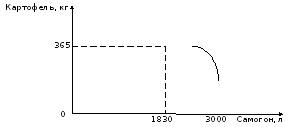
2. The student must pass an exam in economics and mathematics. There are two options for the distribution of grades. What are the opportunity costs of raising the mark in mathematics from 68 to 72 points, expressed in points in economics: a) 70; b) 83; c) 68; d) 13.
|
Situation |
Exam |
|
|
Economics |
Mathematics |
|
|
BUT |
||
|
B |
||
Solution:
If the mark in mathematics is raised from 68 to 72 points, the mark in economics will decrease from 83 to 70 points. Consequently, this difference of 13 points (answer "d") will be the opportunity cost, since (according to the definition of opportunity cost) this is what must be abandoned in favor of the choice of making a decision according to option B.
Note. The opportunity cost would be:
a) 70 points, if in situation "B" the student in economics would have received only 13 points;
b) 83 points, if in situation “B” a student in economics would have received only 0 points;
c) 68 points, if in situation "B" a student in economics would have received only 15 points.
3. The technology makes it possible to produce 2 stools for 1 person / h. and 3 tables for 2 persons / h. Define:
1) what the curve of the production capabilities of a team of 5 people will look like. within a 40-hour work week;
2) how the curve of production possibilities will change if labor costs for the production of stools are halved and the duration of the working week is reduced by a quarter;
3) what are the alternative costs of producing 1 stool in the first case and the alternative costs of producing 1 table in the second case.
Solution:
For five people and a 40-hour work week, that's 200 people / hour. The team will make 400 stools or 300 tables per week. If the working week is reduced by a quarter, then a total of 150 people / hour will turn out. After reducing labor and duration, the team will be able to make 600 stools or 225 tables per week.
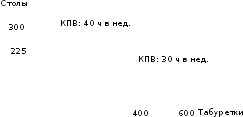
The opportunity cost of producing a stool in the first case is equal to the table. The opportunity cost of producing a table in the second case is equal to a stool.
4. Blacksmith A needs 1 hour to produce a horseshoe, and 2 hours to produce a sickle; and to blacksmith B - on the contrary: for the production of a horseshoe - 2 hours, a sickle - 1 hour. Everyone works 8 hours a day.
Determine what the total daily CPV of blacksmiths A and B looks like?
5. Blacksmith A produces 8 horseshoes or 8 sickles per day, and blacksmith B produces 4 horseshoes or 8 sickles. What does the total daily CPV of blacksmiths A and B look like?
6. Researcher X is flexible. He works every day, but is free to take a day off. His friend Y offered to take a day off and go to the National Park. The fare is 15 soldo, the entrance fee to the park is 10 soldo.
X really wants to visit the park. He is ready to pay 100 soldo for this pleasure. However, he is very fond of his scientific work and is ready to pay 20 soldo himself (!) For every day of his creative work. At what amount of daily earnings will X go to the park?
7. Let Vasily spend 1 hour on the production of a stool and 2 hours on the production of a table, and Ivan - 2 hours on the production of a stool and 1 hour on the production of a table.
Define:
-
How does the CPV of their simultaneous work for 8 hours look like;
-
How will KPV change if Vasily masters Ivan's technology in the production of tables;
-
What are the alternative costs of producing the first and last table, made with the combined efforts of Ivan's technology.
8. 5 people live on a small island. They collect bananas and catch crabs. Each day, everyone can collect 20 bananas, or catch 10 pieces. crabs.
1) Draw a graph of the production capacity of the economy
of this island.
2) Can the islanders get 50 bananas and 30 bananas per day? fish?
3) The islanders have built a device, as a result of which each islander can now harvest 1.5 times more bananas. How has the position of the graph changed?
9. Suppose there are 10 people living in state A, each of whom can produce 5 pairs of shoes or 15 shirts daily. Draw a production capability curve for the state A. Show how the production capability curve would shift if the technology appeared to produce 20 shirts daily. Suppose country A produces 5 pairs of shoes and 30 shirts. If the demand for footwear increases by 5 pairs, how much should the production of shirts be reduced to meet the increased demand?
10. The country produces cars and tractors. In the production of 5 cars, tractors are not produced. In the production of 4 cars, 7 tractors are produced, etc.
|
Cars |
||||||
|
Tractors |
Determine the opportunity cost of production:
1) One additional car (with an increase in their number from 0 to 5);
2) One additional tractor (with an increase in their number from 0 to 25).
A little about our service
In our author's collection of scientific works, on the BYsolo website, at the moment there are only exclusive works made on an individual request for the universities of Belarus and Russia. Our works and, in particular, work: A pensioner who lives in the village Starosovetsky knows how to grow potatoes and make moonshine - does not have duplicates in free essay banks, so the likelihood that the work "Pensioner Starosovetsky living in the village knows how to grow potatoes and make moonshine" has already been submitted to your university , practically equal to zero, in addition, every work, including yours, has passed the most rigorous selection for quality and relevance at the moment.

